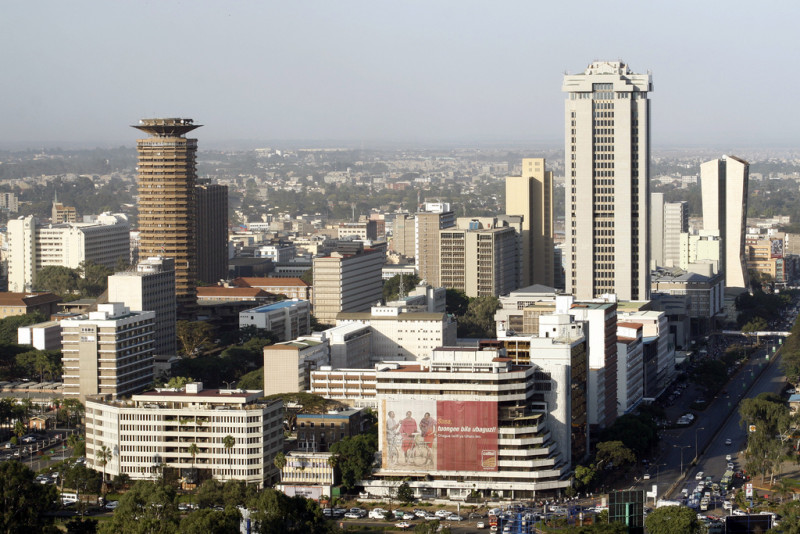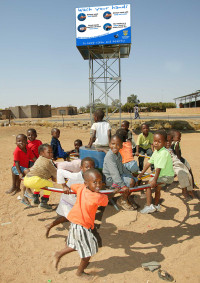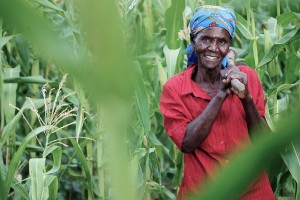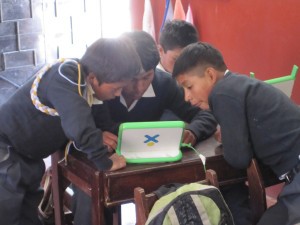By Jacob Kushner February 25, 2015

Nairobi, aerial view. ©DEMOSH
Every month or so in Nairobi, Kenya, a group of Kenyans and expatriates pack into a small room inside a restaurant to listen to a panel of entrepreneurs talk about their brightest business ideas—the new app that’s going to take a bite out of poverty, the mentoring service that’ll help ambitious young East Africans start businesses of their own, or the e-commerce platform that is destined to become the “Amazon.com of Kenya.” Scattered among those in attendance at this “Social Enterprise Happy Hour” are often a few foreign journalists.

Playpumps merri-go-round ©
mediamolecule
Critics have long charged that news media over-emphasize the negative in their coverage of developing nations, focusing on extreme poverty, war or disease without hinting at any proposed solutions. But a similar kind of narrative extremism can plague coverage of positive political, economic or business innovation: too many journalists treat every new idea as a cure-all before it’s had a chance to fail or to succeed. (Maybe you read the glowing stories about the soccer ball that was supposed to generate electricity when you kicked it. Or the PlayPumps, a kind of merry-go-round meant to pump water from a well as children spun and played. Both were famous failures in development aid innovation.)
Social entrepreneurship—the creation of for-profit businesses that aim to improve social conditions in the places where they operate—is big in Africa, and in the developing world at large. But not every entrepreneur who arrives on the scene from Silicon Valley to take advantage of a shortage of business knowledge and high-tech know-how deserves a hero’s welcome. The following are some strategies I’ve developed while covering Nairobi’s social enterprise, tech and overall start-up scene during the past year for the forward-looking, Silicon Valley-based news site, OZY.
When reporting on Africa, foreign journalists often use the word “entrepreneur” to describe every street-side clothes seller or food vendor they encounter. But that is a misleading application of the term. In the West, most entrepreneurs have opted out of a full time job, a 9-to-5 commitment and a boss in order to pursue a dream. The word is typically applied to someone who has taken substantial initiative and risk to start a business that forwards a brand new idea or approach or provides a novel service.

Sidewalk vendors in Kenya ©
Angelo Juan Ramos
Applying the label of “entrepreneur” to an African woman who struggles to feed her family from the income she earns selling second-hand clothing, gives readers a false impression that she’s in a position to rise through the economic ranks. But economic data tell us that is rarely the case—owning small businesses does not typically propel Africans into a higher class.
Not only can this confuse readers about her chances of success and the state of the broader economy, it can also mistate her motives. “The poor don’t see becoming an entrepreneur as something to aspire to,” writes Abhijit Banerjee and Esther Duflo in their groundbreaking book, Poor Economics: A Radical Rethinking of the Way to Fight Global Poverty, on the economic choices made by the world’s poor. “The emphasis on government jobs, in particular, suggests a desire for stability. In fact, stability of employment appears to be the one thing that distinguishes the middle classes from the poor.”
When writing about developing countries, make sure that familiar ways of describing the world do not misrepresent what is actually happening in the place you are covering.
The old tenet that the best stories start with simple questions that are difficult to answer is good to keep in mind when writing about innovation in the developing world. If you are planning to write about the newest company or innovation in town, ask who is served by it, who is employed by it, and what it says about the directions in which the economy is growing.
Take SugarPie Cupcakes, a new specialty cupcake startup in Nairobi. Any journalist could write a fun story about a cupcake shop, and the appeal of specialty western foods in Africa. But when I asked a few simple but perplexing questions, the cupcake store became a symbol of something much larger. For example, who can afford a $3 cupcake in a country where 42 percent of people live on less than $2 day? And how can SugarPie afford to employ someone whose sole function is to sit behind a motorcycle delivery driver holding a box of the cupcakes so that they do not get damaged? My story about SugarPie ultimately became a story about the growing divide between Kenya’s upper class and its working class.

Woman farmer, Nyando Climate Smart Villages, Kenya ©
Climate Change, Agriculture and Food Security
Another example: Say you meet someone who has launched a new app that’s intended to transform the economics of family farms, lifting farmers out of poverty. Well what about the dozens of other apps that have attempted to do the same thing? Is anyone really using them? Are they actually solving the problem? These questions may seem obvious, but they’re rarely asked in East Africa amid the optimism that some dramatic solution to the problem of entrenched poverty will emerge. I wrote about this for OZY, explaining how several of these apps work rather than focusing on just one, and speaking with farmers to ask whether the apps actually work for them or not.
Often foreign reporters forget to put things into a context that’s familiar to their readers. In the article about farming apps, I talked about how farmers are resistant to change and how developers must work hard to design apps that people want to adapt to. But I didn’t want to leave readers with the impression that Africans are uniquely stubborn or make illogical choices, because in fact we are equally resistant to change in the United States. So I introduced the idea this way:
“In the U.S., farmers often resist change because of arcane agricultural subsidies that are worth hundreds of billions of dollars and underwrite the production costs of unprofitable crops. In East Africa, an older generation also remains hesitant.” It doesn’t take much to achieve this sense of context—just a sentence or two in each article that relates the developing world phenomenon to its counterpart at home.
Wherever there is a Goliath, there is likely a David, too. I’m currently writing a piece about Nairobi’s taxi market. Uber recently launched here, joining a handful of other taxi share apps that predated it. When I heard the news about Uber, I asked myself what a company like Uber might be doing—or not doing—to adapt to the unique parameters of a place like Nairobi.

Nairobi traffic jam. ©rogiro
I had already begun learning about MaraMoja, a competing taxi app that is beta-testing its model. MaraMoja built its app to adapt to the fact that in Nairobi, people don’t tend to hail any old taxi or ride with a driver they don’t already know due to security concerns. So instead of writing a story about Uber alone as many journalists did, I chose to compare Uber’s approach with MaraMoja’s. Often local underdogs can tell you more about how the business culture of a place functions than the big foreign companies that set up shop there.
As I mentioned in the introduction, reporters often accept blindly that a new technology or app will transform or disrupt the status quo in a developing country. For example, Forbes was one of many news outlets that praised an MIT professor’s campaign to hand out $100 laptops to children in Peru, an expensive failure to improve education there. Last year, Forbes flip-flopped with the headline, “No Shock as Peru’s One-to-One Laptops Miss Mark.”

Kids in Peru crowd around a laptop. ©
Christoph Derndorfer
It’s impossible to predict, of course, how new technology and new ideas will fare in a developing market, but most news outlets are hesitant to declare anything a success at home until the market has thoroughly put it to test. The same should be true of reporting on the developing world. And if a project does fail, as in the One Laptop Per Child case, it can tell you just as much or more about how an economy functions—an important consideration when producing solutions journalism. Look for failures and write about why they failed.
Want to read more? I’d start with this excellent piece by Foreign Policy: “Can Silicon Valley Save the World?”
****
Jacob Kushner is a freelance journalist reporting on foreign aid, human rights, extractives in developing nations, and Chinese and other foreign investment in Africa. He writes about new ideas in east Africa for OZY. Read more at his website.
This entry was posted on Wednesday, February 25th, 2015 at 2:01 pm. It is filed under On the Beat and tagged with business reporting, development, development economics, Kenya, social entrepreneur, solutions journalism. You can follow any responses to this entry through the RSS 2.0 feed.
Comments are closed.
